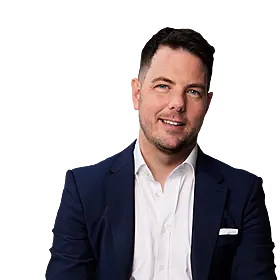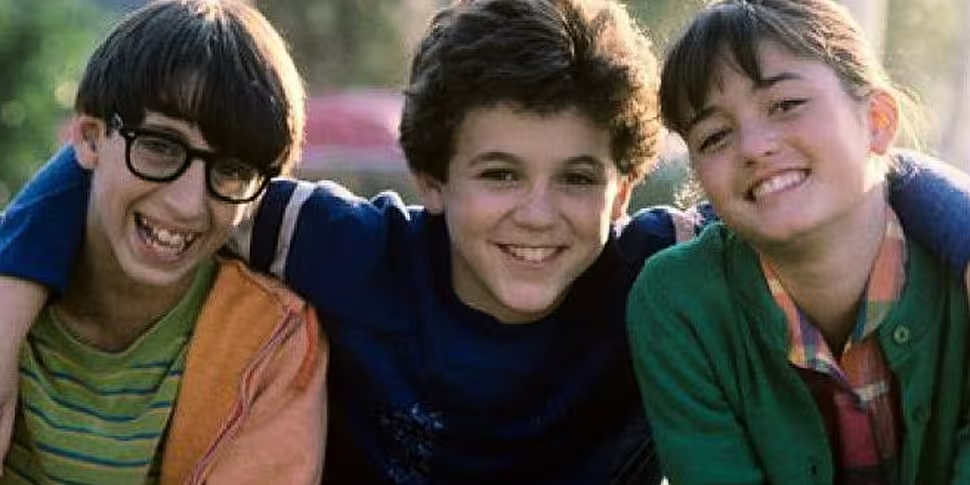This week’s Cultural Toolbox was brimming with nostalgia, for a show about nostalgia – The Wonder Years.
The sitcom show was a global hit in the late 80s and early 90s, achieving major critical and commercial success, but does it hold up to repeat viewing today? Was it a moment of TV genius or just a weekly does of Americana sprinkled with some cornball pop-philosophy?
Shane Coleman and John Fardy sat down to debate the merits of The Wonder Years, and you can listen to the entire Cultural Toolbox here
The Wonder Years factfile:
Air date: 1988-1993
Setting: 1968-73, Anytown USA (never specified)
Story: Kevin Arnold comes to grips with the world around him during his early teenage years, while America goes through a turbulent period of its own. All the while Kevin's older self guides us throughout as an omnipresent narrator, recounting his childhood.
Why it was special: The use of film style directing techniques and the narrative voice of Daniel Stern set it apart from sitcoms that had come before.
Beginnings
Over five years, spanning the late 80s and early 90s, ABC aired critical and commercial hit The Wonder Years.
The show begins at the tail end of the 60s, as the decade of counter-culture - peppered with traumatic national events such as the assassination of JFK, and the still raging war in Vietnam - saw the gradual erasing of the idealism and optimism of 1950s America. And the show was very much of its world – with episodes variously playing out to the backdrop of the war in Vietnam, the Apollo 13 disaster and Watergate. Despite its PG rating, 8pm Sunday night slot on ABC and very much family-oriented exterior, story-lines such as marriage break ups over the death of a son in Vietnam were typical and a world away from the lighter fare offered by many sitcoms.
And the show was dealing with these issues from the very start. In the pilot episode Winnie (Danica McKellar), Kevin’s neighbour and love interest, finds out her brother has died in Vietnam. Winnie’s brother had been a hero to the young Kevin. Kevin comforts Winnie, and they share their first kiss. It was a moment simultaneously of innocence and tragedy so familiar to many Americans who had lived in those years. With Stern's voice-over discussing the unseen depths of life that lived in America's nondescript suburbs, it was a poignant one that laid out for viewers exactly what the show would aim to be.
Savage and McKellar made up the centre of a cast that, like all great shows, seemed tailored to their roles. Savage was recommended to the producers by a host of casting agents in Hollywood, who felt he had the ability to produce a natural portrayal of a young teen on screen – something the producers knew was an all too rare quality in child actors.
The Wonder years pilot episode
A Critical and Commercial Hit
While it took a while to take off commercially, the show was an almost instant hit with critics. With just six episodes aired it won an Emmy for Outstanding Comedy Series in 1988, while Savage, at just 13, became the youngest ever nominee as Outstanding Lead Actor for a Comedy Series. The show won a Peabody Award the following year for “pushing the boundaries of the sitcom format and using new modes of storytelling” and in 1997 “My Father’s Office”, the shows third episode, was ranked at number 29 in TV Guide’s 100 Greatest Episodes of All Time chart.
But the key to the appeal of The Wonder Years wasn’t the setting, the cast, or even its now iconic Joe Cocker performed theme tune - but rather its then revolutionary use of the omnipresent narrator, the older, wiser and altogether less idealistic and hopeful voice of Fred Savage – played by Daniel Stern – who became the sometimes wistful soul of the show. The show came at a time when the babies of the 50s baby-boom were grown and steering the cultural conversation, and the combination of the young Savage alongside the voice of Stern touched a nerve with millions as it expertly placed childhood innocence alongside the world weary wisdom of middle age.
While the show’s basic storylines were focusing on the innocent moments of childhood – the first kiss, the pressures of high school – the narrative voice of a grown Kevin introduced an introspective depth that lifted The Wonder Years above the competition and into the upper echelons of TV writing.
And it wasn’t just sentimentality and a tapping of the wells of nostalgia that set the show apart. Technically, and artistically, it was pushing boundaries in TV, and doing things that were previously unseen in prime-time US TV. The use of a single camera shooting technique was particularly revolutionary at the time, as it was then the sole preserve of the cinema world.
Kevin grows up, The Wonder Years can't
While some argued that the show was struggling to reach the peaks it once had after six years on-air, the show eventually came to an end as the producers and ABC executives couldn’t reach an understanding on its future direction.
With Kevin entering his late teens and early years of adulthood the writers wanted to see the show’s themes follow him, becoming more adult. For a show built on regular doses of Americana and a staple of the American family time of Sundays at 8pm, the shift was to prove incompatible.
The typical response to storylines from network executives was, “You could do this on any show besides The Wonder Years”.
"There has always been a question of just how long The Wonder Years last,” show producer Bob Brush told the LA Times, as the show was coming to a close.
“As the kids were developing and getting older, there were of course new stories to tell, but the tension and constraints of the deadline of the concept of the wonder years were beginning to press on us.”
Series finale: Independence Day
As Kevin aged the arguments with the network grew commensurately.
"When he became 16 and 17, there were really things he needed to get to that we couldn't do at 8 pm, especially with the kind of venerable cachet that the show had obtained with its audience," Brush said.
At one point the writers wanted to write a scene in which Kevin put his hand on a girl’s breast.
The reply came back: “No one in the history of television at 8 p.m. has ever touched a breast”, according to Michael Dinner, the show’s executive producer.
But it wasn’t just Kevin’s dash into puberty that caused problems, it was also the financial elements of a show that was paying actors more and looking to expand its operation to include a wider range of locations to show Kevin's expanding world.
Ultimately the producers and network executives felt the show couldn’t continue, and so after six seasons and 113 episodes the show that returned America to its adolescence was never allowed grow old.
Legacy
In the show's pilot episode, Kevin, in an attempt to console Winnie following the death of her older brother in Vietnam, wraps his green and white New York Jets jacket around her shoulders. The two kiss, a first for both the characters and actors. It was emblematic of what the show would be.
Savage’s mother kept the jacket, joking that it would some day end up in The Smithsonian museum in Washington D.C., as a cultural artefact. In 2012, Savage handed over the jacket, along with a collection of memorabilia from the show, to the National Museum of American History as The Wonder Years was formally inducted to sit alongside the greats of American popular culture.









